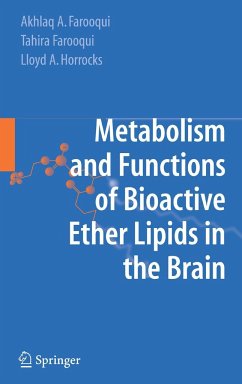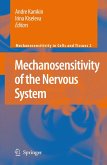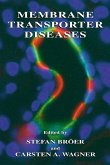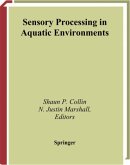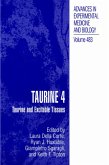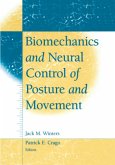Akhlaq A Farooqui, Tahira Farooqui, Lloyd A. Horrocks
Metabolism and Functions of Bioactive Ether Lipids in the Brain
Akhlaq A Farooqui, Tahira Farooqui, Lloyd A. Horrocks
Metabolism and Functions of Bioactive Ether Lipids in the Brain
- Gebundenes Buch
- Merkliste
- Auf die Merkliste
- Bewerten Bewerten
- Teilen
- Produkt teilen
- Produkterinnerung
- Produkterinnerung
Information on bioactive ether lipids and their involvement in neurological disorders is currently scattered throughout the literature in the form of original papers and reviews. Metabolism and Functions of Bioactive Ether Lipids in the Brain provides readers with a comprehensive description of metabolism of bioactive ether lipids in the brain, activities of enzymes involved in their metabolism, and their involvement in neurological disorders.
This book will be particularly useful to neuroscience graduate students, academics, and researchers. Clinicians will find this book useful for…mehr
Andere Kunden interessierten sich auch für
![Mechanosensitivity of the Nervous System Mechanosensitivity of the Nervous System]() Mechanosensitivity of the Nervous System149,99 €
Mechanosensitivity of the Nervous System149,99 €![Membrane Transporter Diseases Membrane Transporter Diseases]() Stefan Bröer / Carsten A. Wagner (eds.)Membrane Transporter Diseases164,99 €
Stefan Bröer / Carsten A. Wagner (eds.)Membrane Transporter Diseases164,99 €![Sensory Processing in Aquatic Environments Sensory Processing in Aquatic Environments]() Shaun P. Collin / N.Justin Marshall (eds.)Sensory Processing in Aquatic Environments229,99 €
Shaun P. Collin / N.Justin Marshall (eds.)Sensory Processing in Aquatic Environments229,99 €![Biologie des Geistesblitzes - Speed up your mind! Biologie des Geistesblitzes - Speed up your mind!]() Henning BeckBiologie des Geistesblitzes - Speed up your mind!24,99 €
Henning BeckBiologie des Geistesblitzes - Speed up your mind!24,99 €![Taurine 4 Taurine 4]() Laura Della Corte / Ryan J. Huxtable / Giampietro Sgaragli / Keith F. Tipton (eds.)Taurine 4227,99 €
Laura Della Corte / Ryan J. Huxtable / Giampietro Sgaragli / Keith F. Tipton (eds.)Taurine 4227,99 €![Biomechanics and Neural Control of Posture and Movement Biomechanics and Neural Control of Posture and Movement]() Jack Winters / Patrick E. Crago (eds.)Biomechanics and Neural Control of Posture and Movement316,99 €
Jack Winters / Patrick E. Crago (eds.)Biomechanics and Neural Control of Posture and Movement316,99 €![Lipids in Health and Disease Lipids in Health and Disease]() Peter J. Quinn / Xiaoyuan Wang (eds.)Lipids in Health and Disease154,99 €
Peter J. Quinn / Xiaoyuan Wang (eds.)Lipids in Health and Disease154,99 €-
-
-
Information on bioactive ether lipids and their involvement in neurological disorders is currently scattered throughout the literature in the form of original papers and reviews. Metabolism and Functions of Bioactive Ether Lipids in the Brain provides readers with a comprehensive description of metabolism of bioactive ether lipids in the brain, activities of enzymes involved in their metabolism, and their involvement in neurological disorders.
This book will be particularly useful to neuroscience graduate students, academics, and researchers. Clinicians will find this book useful for understanding molecular aspects of neurodegeneration in acute neural trauma and neurodegenerative diseases that are mediated by plamalogen-selective phospholipase A2 and PAF acetyl hydrolase. This monograph will be first to provide a comprehensive description of not only metabolism and role of plasmalogen and platelet activating factor in brain tissue but also the involvement of these lipids with abnormal signal transduction processes in neurological disorders.
This book will be particularly useful to neuroscience graduate students, academics, and researchers. Clinicians will find this book useful for understanding molecular aspects of neurodegeneration in acute neural trauma and neurodegenerative diseases that are mediated by plamalogen-selective phospholipase A2 and PAF acetyl hydrolase. This monograph will be first to provide a comprehensive description of not only metabolism and role of plasmalogen and platelet activating factor in brain tissue but also the involvement of these lipids with abnormal signal transduction processes in neurological disorders.
Produktdetails
- Produktdetails
- Verlag: Springer / Springer New York / Springer, Berlin
- Artikelnr. des Verlages: 12187140, 978-0-387-77400-8
- 2008 edition
- Seitenzahl: 260
- Erscheinungstermin: 2. April 2008
- Englisch
- Abmessung: 244mm x 166mm x 25mm
- Gewicht: 554g
- ISBN-13: 9780387774008
- ISBN-10: 0387774009
- Artikelnr.: 23320566
- Herstellerkennzeichnung
- Libri GmbH
- Europaallee 1
- 36244 Bad Hersfeld
- gpsr@libri.de
- Verlag: Springer / Springer New York / Springer, Berlin
- Artikelnr. des Verlages: 12187140, 978-0-387-77400-8
- 2008 edition
- Seitenzahl: 260
- Erscheinungstermin: 2. April 2008
- Englisch
- Abmessung: 244mm x 166mm x 25mm
- Gewicht: 554g
- ISBN-13: 9780387774008
- ISBN-10: 0387774009
- Artikelnr.: 23320566
- Herstellerkennzeichnung
- Libri GmbH
- Europaallee 1
- 36244 Bad Hersfeld
- gpsr@libri.de
Occurrence and importance of ether lipids in brain.- Introduction.- Classification of ether lipids found in brain.- Physicochemical properties of ether lipids.- Fecapentaenes, the novel plasmalogens.- Other ether lipid found in mammalian tissues.- Lipid metabolism in ether lipid-deficient mice.- Conclusion.- Biosynthesis of plasmalogens in brain.- General considerations and distribution of plasmalogens in brain.- Biosynthesis of plasmalogens.- Dihydroxyacetone phosphate acyltransferase.- Alkyl-dihydroxyacetone phosphate synthase.- Acyl/alkyl dihydroxyacetone phosphate reductase 2.2.4. Alkyl-GP acyltransferase.- Alkylacyl-GP phosphohydrolase.- CDP-ethanomamine: diacylglycerol ethanolaminephosphotransferase.- Plasmalogen synthesizing enzymes during brain development.- Topology and distribution of plasmalogen and plasmalogen synthesizing enzymes.- Plasmalogens in lipid rafts.- Plasmalogens in the nucleus.- Factors affecting plasmalogen biosynthesis in brain.- Conclusion.- Catabolism of plasmalogens in brain.- Introduction.- Plasmalogen-selective phospholipase A2.- Receptor-mediated degradation of plasmalogens.- Regulation of PlsEtn-PLA2.- Turnover of Plasmalogen in brain.- Remodeling of plasmalogens (Reacylation/deacylation reactions).- Degradation of plasmalogens by phospholipase C.- Non-enzymic oxidation of plasmalogens in brain.- Plasmalogen-derived lipid mediators and their importance in brain.- Lysoplasmalogens in brain.- Conclusion.- Assay and purification of plasmalogen-selective phospholipase A2 and lysoplasmalogenase activities.- Introduction.- Determination of PlsEtn and PlsCho-PLA2 by radiochemical procedures.- Preparation of radiolabled [3H] plasmenylcholine (choline plasmalogen).- Labeling of lysoplasmenylcholine at the sn-2 position.- Determination of PlsCho-PLA2activity.- Determination of PlsEtn-PLA2 by fluorometric assay.- Purification of ethanolamine plasmalogen.- Labeling of ethanolamine plasmalogen with pyrenesulfonyl chloride.- Determination of PlsEtn-PLA2 activity with pyrene-labeled plasmalogen.- Continuous spectrophotometric determination of PlsEtn-PLA2.- Determination of lysoplasmalogenase.- Continuous spectrophotometric procedure for lysoplasmalogenase.- Continuous spectrofluorometric procedure for lysoplasmalogenase.- Activities of plasmalogen-selective PLA2 in brains of various animal species and cultured cells of neuronal and glial origin.- Determination of lysoplasmalogenase activity in rat liver and brain microsomes.- Purification of plasmalogen-selective PLA2 from brain.- Purification of lysoplasmalogenase from liver.- Conclusion.- Roles of plasmalogens in brain.- Introduction.- Roles of plasmalogens in brain.- Plasmalogens as neural membrane components.- Plasmalogens as a storage depot for second messengers.- Plasmalogens in regulation of enzymic activities.- Plasmalogens in membrane fusion.- Plasmalogens in ion transport.- Plasmalogens in high density lipoprotein.- Plasmalogen, cholesterol oxidation, efflux and atherosclerosis.- Plasmalogens and their antioxidant activity.- Plasmalogen and generation of long-chain aldehydes.- Plasmalogen in differentiation.- Plasmalogens in ocular development.- Plasmalogens as precursors for PAF.- Conclusion.- Involvement of plasmalogens in neurological disorders.- Introduction.- Plasmalogens in neurological disorders.- Plasmalogens in ischemic injury.- Plasmalogens in Alzheimer disease.- Plasmalogens in spinal cord injury.- Plasmalogens in peroxisomal disorders.- Plasmalogens in Sjogren-Larsson syndrome.- Plasmalogens in malnutrition.- Plasmalogens in fetal alcohol syndrome.- Plasmalogens in diabetic heart.- Plasmalogens in other neurological disorders.- Plasmalogens in uraemic patients.- Plasmalogens in myelin-deficient mutant mice.- Conclusion.- Synthesis of platelet activating factor in brain.- Introduction.- Biosynthesis of platelet activating factor.- Remodeling pathway.- Cytosolic phospholipase A2.- Acetyl CoA: lyso-PAF acetyltransferase.- CoA-independent transacetylase.- De novo synthesis of PAF.- 1-Alkyl-2-lyso-sn-glycero-3-phosphate: acetyl-CoA acetyltransferase.- 1-Alkyl-2-acetyl-sn-glycero-3-phosphate phosphohydrolase.- 1-Alkyl-2-acetyl sn- glycerol: CDP-choline phosphotransferase.- Oxidative fragmentation pathway for PAF synthesis.- Regulation of PAF synthesis.- Conclusion.- Degradation of platelet activating factor in brain.- Introduction.- PAF acetyl hydrolases in brain and plasma.- Purification and properties of PAF acetyl hydrolases.- Type I PAF acetyl hydrolase in mammalian tissues.- Type II PAF acetyl hydrolase in mammalian tissues.- PAF-acetyl hydrolases in mammalian plasma.- Other PAF acetyl hydrolases.- Regulation and role of PAF acetyl hydrolases in brain.- PAF hydrolyzing phospholipase C.- Other PAF hydrolyzing lipases.- Conclusion.- Roles of platelet activating factor in brain.- Introduction.- PAF receptors in brain.- Translocation of PAF from synthetic site to cell surface receptors.- PAF-receptor-mediated signal transduction.- Roles of platelet activating factor in brain.- PAF in gene expression.- PAF in neural cell migration.- PAF in long-term potentiation.- PAF in glutamate-mediated neurotoxicity.- PAF and calcium influx.- PAF in neuroinflammation.- PAF in cerebral blood flow and blood brain barrier permeability.- PAF in apoptosis.- PAF in nociception.- PAF in immune response.- Conclusion.- Involvement of platelet activating factor in neurological disorders.- Introduction.- Involvement of platelet-activating factor in neurological disorders.- PAF in ischemia.- PAF in traumatic brain and spinal cord injury.- PAF in meningitis.- PAF in HIV infection.- PAF in prion diseases.- PAF in multiplesclerosis.- PAF in Miller-Dieker lissencephaly.- PAF in migraine attacks.- PAF in kainic acid-mediated neurodegeneration.- Involvement of PAF in non-neural injuries.- Consequences of altered PAF acetyl hydrolase in cardiovascular system.- Molecular mechanism of PAF-mediated neural injury.- Clinical application of PAF antagonists for the treatment of neurological disorders.- Conclusion.- Biochemical effects of non-physiological antitumor ether lipids.- Introduction.- Effect of AEL on enzymes involved in signal transduction.- Effects of AEL on phospholipases A2, C., and D.- Effects of AEL on protein and lipid kinases.- Effect of AEL on cellular receptors.- Other effects of AEL on cellular metabolism.- Molecular mechanism and site of action of AEL.- Conclusion.- Perspective and directions for future development on ether lipids.- Introduction.- Interactions among glycerophospholipid, sphingolipid, and cholesterol-derived lipid mediators.- Interactions between ether lipid and sphingolipid-derived lipid mediators.- Interactions between sphingolipid and cholesterol-derived lipid mediators.- Use of lipidomics, proteomics, and genomics for characterization of enzymes, lipid mediators, and signal transduction process in normal and diseased brain tissues.- Use of RNAi for the treatment of ether lipid-related neurodegenerative diseases.- Conclusion
Occurrence and importance of ether lipids in brain.- Introduction.- Classification of ether lipids found in brain.- Physicochemical properties of ether lipids.- Fecapentaenes, the novel plasmalogens.- Other ether lipid found in mammalian tissues.- Lipid metabolism in ether lipid-deficient mice.- Conclusion.- Biosynthesis of plasmalogens in brain.- General considerations and distribution of plasmalogens in brain.- Biosynthesis of plasmalogens.- Dihydroxyacetone phosphate acyltransferase.- Alkyl-dihydroxyacetone phosphate synthase.- Acyl/alkyl dihydroxyacetone phosphate reductase 2.2.4. Alkyl-GP acyltransferase.- Alkylacyl-GP phosphohydrolase.- CDP-ethanomamine: diacylglycerol ethanolaminephosphotransferase.- Plasmalogen synthesizing enzymes during brain development.- Topology and distribution of plasmalogen and plasmalogen synthesizing enzymes.- Plasmalogens in lipid rafts.- Plasmalogens in the nucleus.- Factors affecting plasmalogen biosynthesis in brain.- Conclusion.- Catabolism of plasmalogens in brain.- Introduction.- Plasmalogen-selective phospholipase A2.- Receptor-mediated degradation of plasmalogens.- Regulation of PlsEtn-PLA2.- Turnover of Plasmalogen in brain.- Remodeling of plasmalogens (Reacylation/deacylation reactions).- Degradation of plasmalogens by phospholipase C.- Non-enzymic oxidation of plasmalogens in brain.- Plasmalogen-derived lipid mediators and their importance in brain.- Lysoplasmalogens in brain.- Conclusion.- Assay and purification of plasmalogen-selective phospholipase A2 and lysoplasmalogenase activities.- Introduction.- Determination of PlsEtn and PlsCho-PLA2 by radiochemical procedures.- Preparation of radiolabled [3H] plasmenylcholine (choline plasmalogen).- Labeling of lysoplasmenylcholine at the sn-2 position.- Determination of PlsCho-PLA2activity.- Determination of PlsEtn-PLA2 by fluorometric assay.- Purification of ethanolamine plasmalogen.- Labeling of ethanolamine plasmalogen with pyrenesulfonyl chloride.- Determination of PlsEtn-PLA2 activity with pyrene-labeled plasmalogen.- Continuous spectrophotometric determination of PlsEtn-PLA2.- Determination of lysoplasmalogenase.- Continuous spectrophotometric procedure for lysoplasmalogenase.- Continuous spectrofluorometric procedure for lysoplasmalogenase.- Activities of plasmalogen-selective PLA2 in brains of various animal species and cultured cells of neuronal and glial origin.- Determination of lysoplasmalogenase activity in rat liver and brain microsomes.- Purification of plasmalogen-selective PLA2 from brain.- Purification of lysoplasmalogenase from liver.- Conclusion.- Roles of plasmalogens in brain.- Introduction.- Roles of plasmalogens in brain.- Plasmalogens as neural membrane components.- Plasmalogens as a storage depot for second messengers.- Plasmalogens in regulation of enzymic activities.- Plasmalogens in membrane fusion.- Plasmalogens in ion transport.- Plasmalogens in high density lipoprotein.- Plasmalogen, cholesterol oxidation, efflux and atherosclerosis.- Plasmalogens and their antioxidant activity.- Plasmalogen and generation of long-chain aldehydes.- Plasmalogen in differentiation.- Plasmalogens in ocular development.- Plasmalogens as precursors for PAF.- Conclusion.- Involvement of plasmalogens in neurological disorders.- Introduction.- Plasmalogens in neurological disorders.- Plasmalogens in ischemic injury.- Plasmalogens in Alzheimer disease.- Plasmalogens in spinal cord injury.- Plasmalogens in peroxisomal disorders.- Plasmalogens in Sjogren-Larsson syndrome.- Plasmalogens in malnutrition.- Plasmalogens in fetal alcohol syndrome.- Plasmalogens in diabetic heart.- Plasmalogens in other neurological disorders.- Plasmalogens in uraemic patients.- Plasmalogens in myelin-deficient mutant mice.- Conclusion.- Synthesis of platelet activating factor in brain.- Introduction.- Biosynthesis of platelet activating factor.- Remodeling pathway.- Cytosolic phospholipase A2.- Acetyl CoA: lyso-PAF acetyltransferase.- CoA-independent transacetylase.- De novo synthesis of PAF.- 1-Alkyl-2-lyso-sn-glycero-3-phosphate: acetyl-CoA acetyltransferase.- 1-Alkyl-2-acetyl-sn-glycero-3-phosphate phosphohydrolase.- 1-Alkyl-2-acetyl sn- glycerol: CDP-choline phosphotransferase.- Oxidative fragmentation pathway for PAF synthesis.- Regulation of PAF synthesis.- Conclusion.- Degradation of platelet activating factor in brain.- Introduction.- PAF acetyl hydrolases in brain and plasma.- Purification and properties of PAF acetyl hydrolases.- Type I PAF acetyl hydrolase in mammalian tissues.- Type II PAF acetyl hydrolase in mammalian tissues.- PAF-acetyl hydrolases in mammalian plasma.- Other PAF acetyl hydrolases.- Regulation and role of PAF acetyl hydrolases in brain.- PAF hydrolyzing phospholipase C.- Other PAF hydrolyzing lipases.- Conclusion.- Roles of platelet activating factor in brain.- Introduction.- PAF receptors in brain.- Translocation of PAF from synthetic site to cell surface receptors.- PAF-receptor-mediated signal transduction.- Roles of platelet activating factor in brain.- PAF in gene expression.- PAF in neural cell migration.- PAF in long-term potentiation.- PAF in glutamate-mediated neurotoxicity.- PAF and calcium influx.- PAF in neuroinflammation.- PAF in cerebral blood flow and blood brain barrier permeability.- PAF in apoptosis.- PAF in nociception.- PAF in immune response.- Conclusion.- Involvement of platelet activating factor in neurological disorders.- Introduction.- Involvement of platelet-activating factor in neurological disorders.- PAF in ischemia.- PAF in traumatic brain and spinal cord injury.- PAF in meningitis.- PAF in HIV infection.- PAF in prion diseases.- PAF in multiplesclerosis.- PAF in Miller-Dieker lissencephaly.- PAF in migraine attacks.- PAF in kainic acid-mediated neurodegeneration.- Involvement of PAF in non-neural injuries.- Consequences of altered PAF acetyl hydrolase in cardiovascular system.- Molecular mechanism of PAF-mediated neural injury.- Clinical application of PAF antagonists for the treatment of neurological disorders.- Conclusion.- Biochemical effects of non-physiological antitumor ether lipids.- Introduction.- Effect of AEL on enzymes involved in signal transduction.- Effects of AEL on phospholipases A2, C., and D.- Effects of AEL on protein and lipid kinases.- Effect of AEL on cellular receptors.- Other effects of AEL on cellular metabolism.- Molecular mechanism and site of action of AEL.- Conclusion.- Perspective and directions for future development on ether lipids.- Introduction.- Interactions among glycerophospholipid, sphingolipid, and cholesterol-derived lipid mediators.- Interactions between ether lipid and sphingolipid-derived lipid mediators.- Interactions between sphingolipid and cholesterol-derived lipid mediators.- Use of lipidomics, proteomics, and genomics for characterization of enzymes, lipid mediators, and signal transduction process in normal and diseased brain tissues.- Use of RNAi for the treatment of ether lipid-related neurodegenerative diseases.- Conclusion

